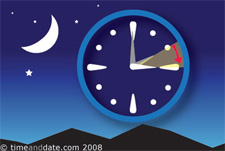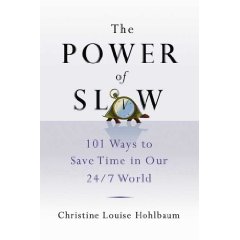
 Remember that cool car Michael J. Fox drove in the movie, ‘Back to the Future’, that ultra-suave time machine that allowed him to not only look cool on screen, but also impact events in past and future? On Sunday, March 14 at 2 a.m., we’ll be wishing we looked that dapper. Daylight Saving Time has more of a bewildering effect on our organism than anything else. It is mini jet-lag at its best.
Remember that cool car Michael J. Fox drove in the movie, ‘Back to the Future’, that ultra-suave time machine that allowed him to not only look cool on screen, but also impact events in past and future? On Sunday, March 14 at 2 a.m., we’ll be wishing we looked that dapper. Daylight Saving Time has more of a bewildering effect on our organism than anything else. It is mini jet-lag at its best.
Every year it’s the same old story. We switch the clocks, blink bleary-eyed out the window, and wonder why it’s still dark outside. We battle with our own instincts to curl up into the fetal position for one more round of sleep.
Let’s look at it positively. It is the one moment of the year in which we get to jump forward an hour with a simple twist of the clock. A minor inconvenience of modern life, Daylight Saving Time is meant to save energy. While most of our lives is spent on some level of clock combat as we try to beat more into our schedules, Daylight Saving Time has more to do with war than you might know.
Daylight Saving Time was first instituted during World War I in the United States to take advantage of the longer daylight hours for war production between the months of April and October. During World War II the time change was reinstated for the same reasons. Between the wars, the federal government allowed each State to decide whether or not to observe the time change. It wasn’t until 1966 that the Uniform Time Act standardized the length of Daylight Saving Time. During the Bush Administration, Daylight Saving Time was extended by four weeks after the Energy Policy Act was passed in 2005. By 2007, forty-seven and one-half states, with the exception of Arizona, Hawaii and the Eastern Time Zone of Indiana that do not observe the time change, got to spring forward in March instead of April.
 If changing the clock gives you the blues, you are not alone. According to an informal poll on PowerofSlow.org, most people reported feeling groggy and disoriented for a few days after the clocks turn forward. According to research presented in the Journal of Applied Psychology in September 2009, job-related injuries soar right after Daylight Saving Time. Although it is intended to save energy, in some cases changing the clock costs people sleep, thereby leaving them lethargic and more accident-prone.
If changing the clock gives you the blues, you are not alone. According to an informal poll on PowerofSlow.org, most people reported feeling groggy and disoriented for a few days after the clocks turn forward. According to research presented in the Journal of Applied Psychology in September 2009, job-related injuries soar right after Daylight Saving Time. Although it is intended to save energy, in some cases changing the clock costs people sleep, thereby leaving them lethargic and more accident-prone.
To ensure you keep a spring in your step, consider these tips to offset the effects of this year’s clock change:
1. Progressively go to bed a few minutes earlier a week before the clock change.
2. Be sure you get sufficient exposure to natural light. Your body’s circadian rhythm depends on it.
3. Not only the time change, but also the change in weather can affect your immune system. Eat vitamin-rich foods. A rule of thumb is to eat one thing in its natural state with every meal (yes, lettuce on your sandwich counts!).
4. Sleep with the shades up for a few days so it is easier to get up in the morning.
5. Research at the University of Sussex has shown that reading for just six minutes can reduce your stress level by sixty-eight percent. Integrate some reading time into your routine before you go to sleep.
Our relationship with time impacts every other relationship we have. When we feel rushed and time-starved, we enjoy our lives less. Daylight Saving Time is a great opportunity to embrace the notion of time abundance, even as we seemingly ‘lose an hour’. Time abundance is a mindset that says you have more than enough time to fulfill your ultimate purpose. Just know you are only temporarily without the hour this March because you get it back in October. Besides, if we are all still around in 2012, you get to jump for joy for a whole extra day on February 29th. Now that’s reason enough to leap through the year!
This is a guest post by Christine Louise Hohlbaum, the author of The Power of Slow: 101 Ways to Save Time in Our 24/7 World.
Additional Time Resources:
Time around the world
Time-saving tips
Virtual calendar
Biological Age
Leave a Reply